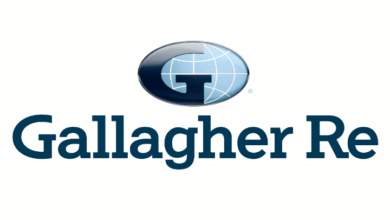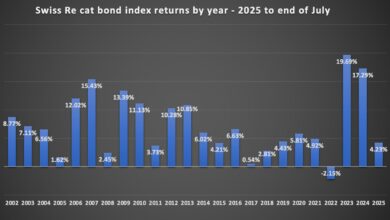10 Proven Ways Business Owners Can Cut Commercial Property Insurance Premiums by 30%

Key Takeaways
- Understanding your risk profile and property details is essential to identifying where your premiums come from and how to lower them.
- Implementing risk management measures like fire prevention, security upgrades, and building maintenance can lead to significant premium discounts.
- Shopping around, bundling policies, and working with experienced brokers or agents can uncover better coverage options at lower costs.
- Adjusting deductibles and regularly reviewing your coverage ensures you’re not overpaying while maintaining adequate protection.
Running a business in the U.S. comes with a lot of moving parts—employees, operations, compliance, taxes, and perhaps one of the most overlooked costs: commercial property insurance premiums. In 2024, commercial property insurance premiums jumped between 7% and 15% in many U.S. states, driven largely by climate-related risks like hurricanes, wildfires, and flooding. For many small and mid-sized businesses, these premiums can quietly eat into profits year after year.
But here’s the good news: you can cut costs without cutting coverage. Independent insurance brokers report that many businesses can reduce costs by 10–30% through smarter policy choices, risk mitigation improvements, and strategic bundling. By understanding how insurers price policies, what risks trigger higher rates, and what proactive steps you can take, you could save thousands annually while maintaining strong protection.
Below is a comprehensive guide on how business owners can lower commercial property insurance premiums effectively and sustainably.

Why Are Commercial Property Premiums Increasing? (U.S. Market Overview)
Commercial property insurance premiums are rising due to three main forces: climate-driven losses, reinsurance market pressures, and state-specific risk exposure.
Climate-Driven Risk Exposure
Natural disasters like hurricanes, wildfires, floods, and tornadoes are now more frequent and severe. U.S. insurers paid out over $57 billion in insured losses during 2023’s billion-dollar weather events alone. Since 2017, commercial property rates have climbed roughly 7% per year, hitting double-digits in many regions by 2023. Businesses in high-risk zones—like coastal Florida or wildfire-prone California—face much steeper annual hikes.
Insurance Cycle & Reinsurance Market Pressures
Insurers rely on reinsurance to offset catastrophe risk, but following major losses, reinsurers have sharply raised rates and tightened coverage terms. Primary insurance firms must pass this cost onto customers, which in some cases, drove reinsurance rate increases of up to 100% across exposed portfolios in 2023. Though some reinsurance costs began to stabilize in 2024–25, insurers remain cautious, maintaining higher premiums to safeguard against future volatility.
Standard underwriting cycles also play a role—when insurers suffer losses, they raise rates, leading to a “hard market.” As capital rebuilds, competition eventually softens the market, but current exposure remains elevated.
Regional & State-Specific Dynamics
Premium shifts aren’t uniform across the U.S. Some states—especially Florida—saw commercial property premiums double in a single year, while other states had more modest increases. According to Deloitte, buildings in FEMA’s top‑10 highest‑loss states faced 31% average annual cost increases, compared to lower-risk states.
In California, regulatory changes approved in early 2025 let insurers pass through reinsurance costs, potentially increasing premiums by 30–40% in wildfire-exposed regions—even as the state attempts to maintain market availability.
Commercial property premiums have soared because insurers are covering more frequent and costly climate events, insurers’ costs to reinsure have spiked, and high-risk regions have borne much stronger rate hikes than the national average.
By understanding these dynamics—climate risk, underwriting cycles, and regional exposure—business owners can identify where to target cost-saving strategies effectively.

Invest in mitigation measures like fire protection or flood defenses—insurers often reward proactive risk reduction with discounts.
Key Factors That Determine Your Premium
Key factors that determine your commercial property insurance premium are driven by your property’s value, operational history, and location risks—all of which insurers use to assess future loss exposure.
Total Insurable Value (TIV) & Building Type
Your premium is tied directly to your Total Insurable Value (TIV). This figure includes the cost of replacing the building, equipment, and inventory if it’s destroyed. Overestimating it leads to paying for more coverage than you need, while underestimating it leaves you exposed.
Building construction is another factor. Structures with fire-resistant materials, sprinkler systems, and modern wiring often qualify for lower premiums, while older wooden buildings with outdated systems are more expensive to insure (Investopedia).
Claims History & Business Operations
Your loss record and type of business strongly influence rates. Insurers review your claims for the past five years. Multiple small claims or any large claim can trigger higher premiums.
Some industries carry more risk. For example, businesses dealing with chemicals, heavy machinery, or large inventories often face higher premiums than offices or retail spaces
Location-Based Risk & Geographic Variables
Insurers assess property risk based on natural hazards (wildfires, floods, hurricanes, hail). Properties in climate-exposed states like Florida and California face significantly higher premiums—often double compared to lower-risk states like Illinois
In California, rising wildfire losses and regulatory constraints have pushed some insurers to exit markets or raise rates by 30–50%—building owners must often rely on state FAIR plans with reduced coverage. Meanwhile, the heaviest hit regions may see premiums topping 4‑5% of annual rental or income value, compared to a national average of ~1–2%.
Bottom line:
Insurers price your premium using three elements: how much it costs to rebuild your property, how risky your operations are, and how exposed your location is to disasters. Understanding these factors helps you target changes that can reduce your premium without losing protection.
Save more by comparing quotes from multiple insurance agents near you.

Trusted agents working with top national companies.
10 Actionable Ways to Lower Your Commercial Property Insurance Premiums
Lower your premium fast by applying these proven strategies—each backed by real cases and industry insights.
1. Understand What Drives Your Premiums
Before trying to reduce costs, you need to know what insurers look at when setting your premium. These factors include:
- Property Location: A building in a flood zone, wildfire-prone area (like California), or hurricane belt (Florida, Texas, Louisiana) will naturally have higher premiums.
- Construction Type: Fire-resistant materials like brick or concrete lower risk and cost less to insure than wood-frame buildings.
- Property Age and Condition: Older buildings with outdated wiring, plumbing, or roofing carry higher fire or water damage risks, increasing premiums.
- Business Use: A restaurant with open flames will cost more to insure than an office space.
- Claims History: Multiple past claims make you a higher risk, raising your premium.
- Security Measures: Alarm systems, sprinklers, and 24/7 monitoring can reduce your costs significantly.
Tip: Request a risk assessment from your insurer. Many carriers will do this for free and identify key factors driving your rates.
2. Shop Around and Compare Policies
It’s surprising how many businesses renew their policies automatically. Insurance premiums can vary 20%–40% across carriers for the same coverage.
How to shop smart:
- Ask for Industry-Specific Programs: Some insurers offer tailored packages with discounts for certain business types.
- Bundle Policies: Combining property, general liability, and business interruption coverage with the same carrier can reduce costs by 10%–15%.
- Review Limits and Exclusions: Ensure you’re not over-insuring property you no longer use or paying for endorsements you don’t need.
3. Implement Risk Management and Loss Prevention Measures
Insurance companies love businesses that lower their risk exposure—it directly impacts premium pricing.
What you can do:
- Install Fire Suppression Systems: Sprinklers, alarms, and fire extinguishers can lower your premiums by up to 10%.
- Upgrade Security: Video surveillance, burglar alarms, and access control systems discourage theft and reduce claims.
- Maintain Your Building: Regular roof inspections, plumbing updates, and electrical upgrades prevent costly damage and show insurers you’re proactive.
- Employee Training: Train staff on fire safety, evacuation protocols, and proper equipment handling.
4. Reassess Your Property Values and Coverage
Many businesses overpay because they insure their property for more than its actual replacement cost.
Steps to avoid over-insuring:
- Get a Professional Appraisal: Property values fluctuate—ensure your coverage reflects today’s rebuild cost, not outdated estimates.
- Separate Land from Structure: You don’t need to insure the land, only the building and contents.
- Review Equipment Values: Are you insuring machinery you no longer use or replaced? Adjust your schedule.
- Check Co-Insurance Clauses: Failing to meet co-insurance requirements can result in penalties even on partial claims.
5. Increase Your Deductible
Raising your deductible is one of the quickest ways to lower premiums.
For example:
- A $2,500 deductible instead of $1,000 could lower premiums by 10%–20%.
- Just ensure you can comfortably afford the deductible if a claim occurs.
This works well for businesses with strong risk management and a low claim history.
6. Explore Group and Association Discounts
Many industries have associations that partner with insurers to offer lower-cost plans.
Examples include:
- National Federation of Independent Business (NFIB)
- Industry-specific trade associations
Joining one could qualify your business for 5%–15% discounts on property premiums.
7. Take Advantage of State-Specific Programs
Some U.S. states have special incentives for businesses that invest in risk mitigation:
- Florida: Offers grants for wind-resistant roofing upgrades.
- California: Discounts for seismic retrofitting.
- Texas: Premium credits for implementing certain security measures.
Check with your state’s Department of Insurance for programs that can save you money.
8. Improve Energy Efficiency and Sustainability
Insurers increasingly reward green initiatives because they often reduce fire hazards and equipment breakdowns.
Consider:
- Replacing old wiring and HVAC systems with energy-efficient models.
- Installing solar panels with proper surge protection.
- Using eco-friendly roofing materials with fire-resistant ratings.
9. Monitor Market Changes and Renewal Trends
Commercial property insurance rates in the U.S. increased by over 9% in 2023 according to Marsh’s Global Insurance Market Index, mainly due to inflation and natural disaster risks.
What you can do:
- Review policies 90 days before renewal: Gives time to negotiate or switch carriers.
- Ask for loss control services: Many insurers offer free inspections and safety recommendations that lead to discounts.
- Challenge unjustified increases: Request detailed explanations for hikes and ask how to lower them.
10. Work With an Experienced Broker
A knowledgeable insurance broker can:
- Analyze your coverage for gaps and overlaps.
- Negotiate lower premiums with carriers.
- Ensure compliance with state insurance laws and building codes.
- Provide insights into risk management investments with the best ROI.
State-Specific Considerations
State-specific risks shape how much you’ll pay for commercial property insurance—and knowing them lets you plan smarter and save more.
Florida: Wind, Hurricanes & Required Mitigation Credits
Florida ranks among the highest-cost states for commercial property insurance due to frequent hurricanes and costly wind exposure. Insurers received approved rate increases averaging 9.2% for commercial customers in early 2023 alone
The state mandates wind mitigation discounts for buildings featuring hurricane shutters, reinforced roofs, or code-compliant construction. A wind mitigation report—conducted by a licensed inspector—can qualify you for credits worth up to 40% off wind-related risk premiums, helping offset high base costs
California: Wildfires and Shifting Regulations
Wildfire devastation—most recently totaling billions in Los Angeles in 2025—has triggered massive insurer losses. Many major carriers, including State Farm, stopped writing new policies in certain areas or exited the market entirely.
Starting January 2025, new rules let insurers pass through 30–40% of reinsurance costs to policyholders, as long as they commit to serving wildfire zones. That may ease availability but increase rates for at-risk businesses.
In high-wildfire areas, business owners may be forced into California’s FAIR Plan—the insurer of last resort—resulting in limited coverage and surcharges that can reach $1,000–$3,700 per policy to fund losses.
Midwest & Tornado Zones: Hail and Storm Exposure
In states like Oklahoma, Kansas, and parts of Texas, hail and tornado risks drive insurers to demand higher premiums. While mitigation programs differ, strengthening your roof and storm-proofing windows can justify rate reductions or credits, especially when paired with insurers who offer climate-risk incentives through FORTIFIED or local resilience grants.
Final Thoughts
Reducing commercial property premiums isn’t about cutting corners—it’s about making smart, informed decisions that insurers reward with lower rates. By combining proactive risk management, strategic policy review, and competitive shopping, business owners can protect their assets while keeping costs under control.
Bottom line: Treat insurance not as a static bill but as a negotiable, controllable expense. Each dollar you save on premiums is another dollar that can be reinvested into your company’s growth.
Frequently Asked Questions
-
How to Lower Commercial Property Insurance Premiums
Raising your deductible is a straightforward and effective method to bring down your insurance costs. While this means you’ll be responsible for a larger portion of any claim out of pocket, it directly reduces your regular premium payments. Before making this change, carefully evaluate whether your business can comfortably cover the higher deductible without disrupting day-to-day operations.
-
How to save money on commercial insurance?
Here are five practical strategies to cut your business insurance costs:
-
Compare quotes from multiple insurers, as premiums can differ widely between companies.
-
Opt for a higher deductible to lower your overall premium payments.
-
Bundle your policies into a package to unlock discounts.
-
Build a strong partnership with your agent or broker to uncover personalized savings opportunities.
-
Inquire about risk prevention measures that can reduce your exposure and insurance expenses.
-



